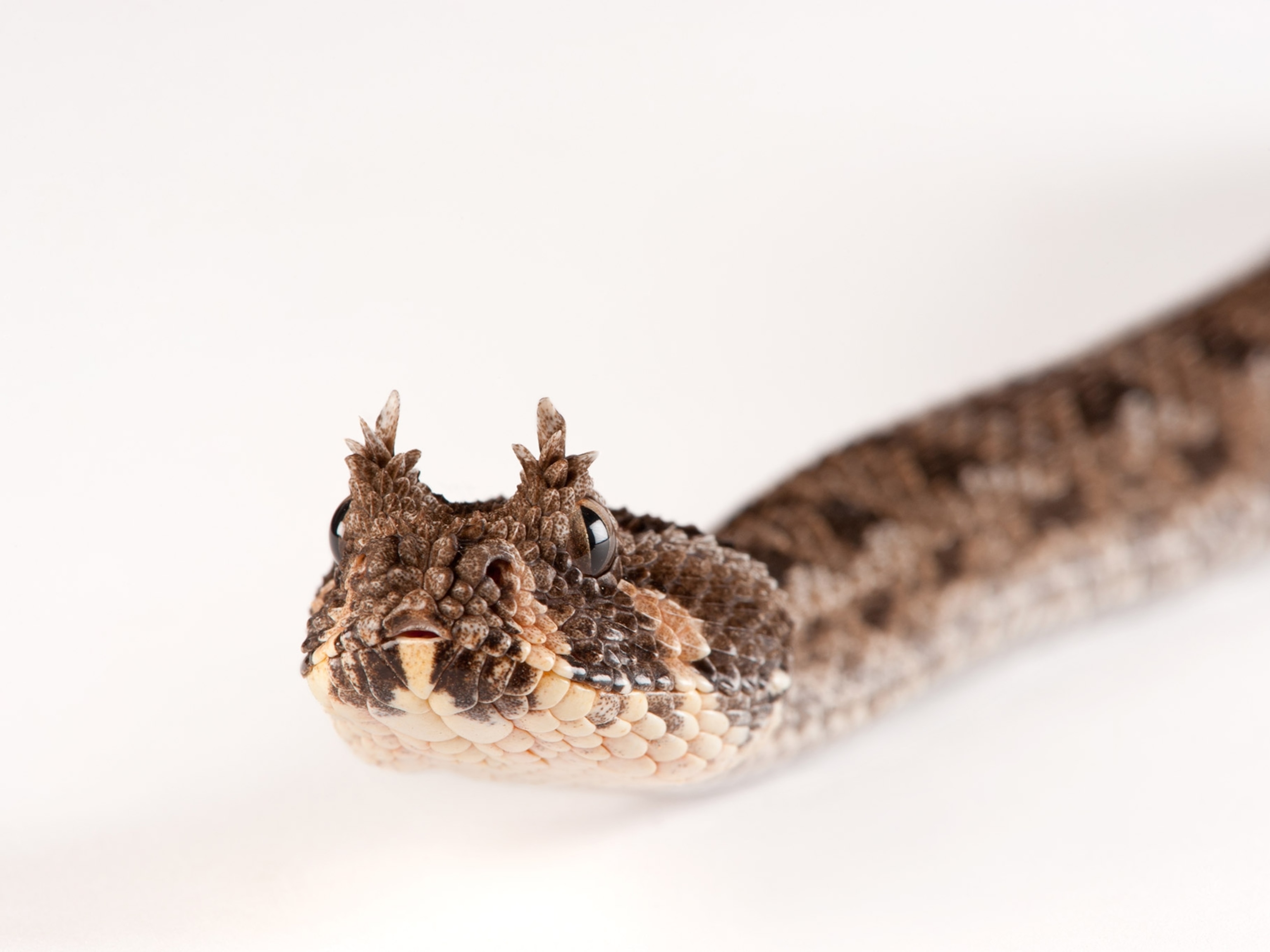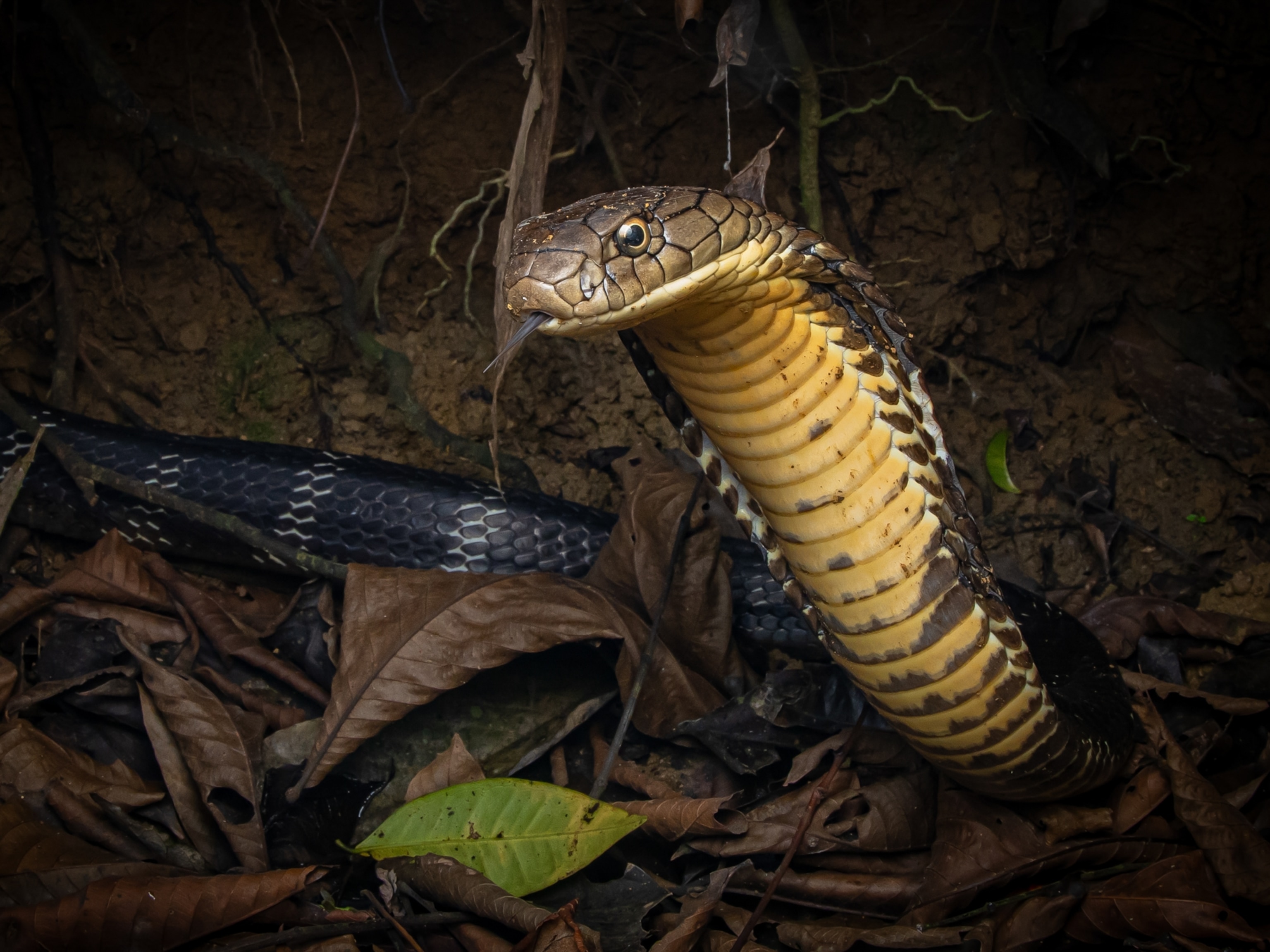
How Snakes Can "Fly"
Looking up, doing the twist among "flying" snakes' best moves, study says.
It's been known for a while that certain snake species can "fly," gliding as far as 330 feet (100 meters) from branch to branch—but how?
A new study—using unprecedented filming, 3-D modeling, and snakes both real and plastic—has shown how flying snakes angle and arrange themselves to achieve optimal lift.
Found in Southeast and South Asia, five Chrysopelea snake species have been observed twisting their ribs and flattening their bodies in midair, but this doesn't fully explain how the reptiles control their descent.
"Other snakes flatten their bodies as well," said Jake Socha, a biologist at Virginia Tech. For example, king cobras can flatten their hoods for defensive purposes.
To find out what else enables the snakes to glide, Socha and his colleagues used four cameras to record four flying snakes as they leaped off a five-story tower to another, smaller tower several dozen yards away.
The team then used the images to create 3-D computer models of the reptiles' body positions during flight. (See snake pictures.)
The images and models revealed that the snakes position their bodies at 25-degree angles as they fall—heads up, tails down.
The effect is similar to what happens when you stick your arm out of a moving car and rotate your hand so the palm is pointed slightly upward.
"You hand is now angled to the oncoming flow, and that angle helps push the air down," Socha said. "As a consequence, your hand goes up."
(Also see "Drug-Filled Mice Airdropped Over Guam to Kill Snakes.")
(See more videos of "flying" snakes from the National Geographic Channel.)
Flying Snakes Do the Twist
The Chrysopelea snakes, which can grow up to 4 feet (1.2 meters) long, also hold their bodies in S-shaped configurations while gliding. The computer model suggested this twisty position helps them stay aloft. Subsequent experiments proved the software right.
The team tested the aereodynamics of different snake shapes using plastic models in a water tunnel.
"Our research suggests that, with an S configuration, [the snake] gets more lift than it would if it were a straight snake," said Socha, whose initial flying-snake research was funded by the National Geographic Society's Committee for Research and Exploration. (The Society owns National Geographic News.)
(Related: "Alien Giant Snakes Threaten to Invade Up to One-Third of U.S.")
With an S configuration, "the front part of the snake might be creating a wake that interacts with [and lifts] the back parts of the body," Socha said.
This is similar to the lift created when geese fly in a V formation: The wake generated by the lead goose makes flying marginally easier for the geese directly behind, and so on.
At least one mystery remains: Why do flying snakes undulate their bodies as they fall?
Socha's team thinks, but hasn't proven, that this rippling motion might help sustain the snakes' flight by creating a flow of air over the top of the snake's body.
"This reduces the pressure on top, creating a greater pressure difference from bottom to top, [and] increasing the net upward force," Socha explained.
Do Flying Snakes Hold Military Secrets?
In the long run, understanding how flying snakes glide might lead to better gliding air vehicles—Socha's latest research is funded by the U.S. Defense Advanced Research Agency, or DARPA.
But, he said, DARPA wasn't "interested in this from the applications perspective, they were interested in it from a basic science view, with potential applications a secondary consideration."
And for his part, Socha said, the main motivation for studying the animals is simple curiosity. (Related pictures: "Snakes on Gel, in Jackets Illuminate Slithering.")
"This is amazingly interesting and curious, and it's not at all clear how it works or how it could have evolved," he said. "I'm just trying to answer these basic questions."
More: how snakes fly on passenger planes >>
The new flying-snake research was presented Monday at a meeting of the American Physical Society's Division of Fluid Dynamics in Long Beach, California. The study will be published in Wednesday's issue of the journal Bioinspiration & Biomimetics.





